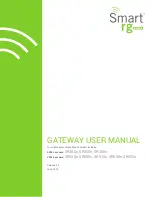
ISDN Events
B-3
Under normal situations, the source of this cause is not the
network.
Cause No. 17: user busy.
The called user has indicated the
inability to accept another call.
It is noted that the user equipment is compatible with call.
Cause No. 18: no user responding.
The user does not respond to a
call establishment message with either an aler ting or connect
indication within the prescribed period of time allocated (defined in
Recommendation Q.931 by the expiration of either timer T303 or
T310).
Cause No. 19: no answer from user (user alerted).
The user has
provided an aler ting indication but has not provided a connect
indication within a prescribed period of time.
This cause is not necessarily generated by Q.931 procedures but
may be generated by internal network timers.
Cause No. 21: call rejected.
The equipment sending this cause
does not wish to accept this call, although it could have accepted
the call because the equipment is neither busy nor incompatible.
Cause No. 22: number changed.
The called par ty number
indicated by the calling user is no longer assigned. The new called
par ty number may optionally be included in the diagnostic field. If a
network does not suppor t this capability, Cause No. 1 shall be
used.
Cause No. 26: non-selected user clearing.
The user has not been
awarded the incoming call.
Cause No. 27: destination out of order.
The destination indicated
by the user cannot be reached because the inter face to the
destination is not functioning correctly. The term “not functioning
correctly” indicates that a signaling message was unable to be
delivered to the remote user, for example, a physical layer or data
link layer failure exists at the remote user’s site, or the user
equipment is off-line.
Cause No. 28: invalid number format (address incomplete).
The
called user cannot be reached because the called par ty number is
not a valid format or is not complete.
















































